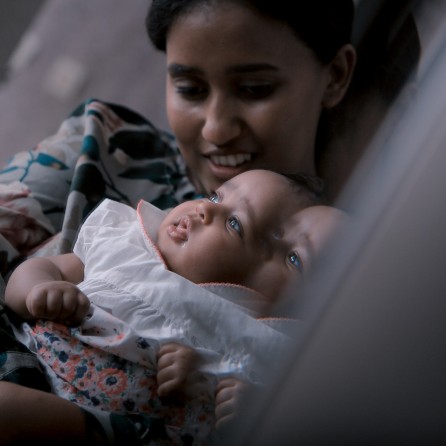
An Australian study shows risk of developing multiple sclerosis halves with each child a woman bears; the more children the lower the risk of MS.
A new study from Melbourne in Australia has shown that the more children women have the less likely they are to develop multiple sclerosis, with the risk of MS halving with each live birth.
Published in the international journal Neurology in March 2012, the paper by Anne-Louise Ponsonby’s group at the Murdoch Children’s Research Institute showed that the risk of MS was not affected by the time since the last birth so the protective effect of pregnancy was likely to be life-long.
Among men, the number of children they had bore no relationship to their risk of developing MS. This means that the reduced risk of MS associated with having children is due to factors directly related to pregnancy rather than anything that happens after birth.
The study used a case-control approach. This research method compares characteristics and factors about the people being investigated (in this case, those with a demyelinating event) with those of other people in the population without this particular neurological illness to see how the people with the demyelinating event differ from the controls; this can help identify factors that may be causative or protective in developing the demyelination.
Cases were adults aged 18 to 59 years when they received their first clinical diagnosis of a central nervous system demyelinating event.
Controls were people who had not had a demyelinating event. For each case, two controls who were the same sex, of similar age, and lived in the same part of Australia, were selected from the Australian electoral roll. Cases and controls were asked to provide information about pregnancies and live births.
The researchers then compared the data collected from cases and controls to assess the association between having children and risk of MS.
They used a statistical technique called regression analysis so they were able to include other information such as the amount of skin damage, antibodies to glandular fever and region of Australia in their statistical models.
This meant that they could allow for differences in sun exposure and rates of glandular fever infection that we know are associated with MS risk, so that the true effect of number of pregnancies could be isolated.
A strength of this study is that it included people as cases only when they were first diagnosed with a clinical central nervous system demyelinating event whereas other case-control studies have included women with MS whether or not it was recently diagnosed.
This better allows for the possibility that women’s decisions about childbearing can change as a result of being diagnosed with MS. This study was extremely well conducted from an epidemiological point of view.
We know that over time, more and more women are being diagnosed with MS compared with men. It is possible that this increasing preponderance of women with MS could be due the fact that women are having less children than they have in the past.
This is a really important study. For years, many women with MS have felt pressure to not have many children for a variety of reasons.
This study strongly suggests a protective effect of pregnancy on the disease process in MS. Similarly, daughters of people with MS, who are at considerably higher risk of MS than the rest of the population, can take some comfort in knowing that having children of their own will provide some protection against developing the disease, along with the well known protective effect of adequate sun exposure and vitamin D supplementation.
Professor Anne Kavanagh